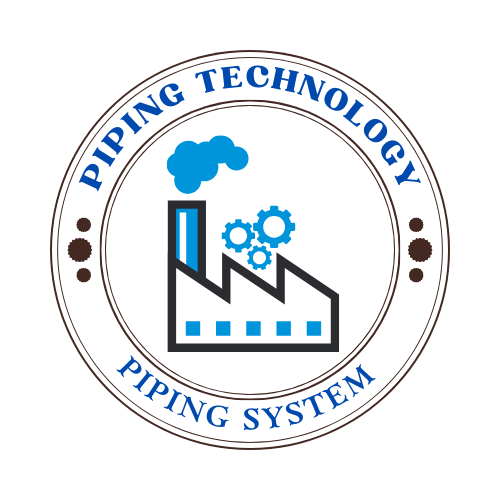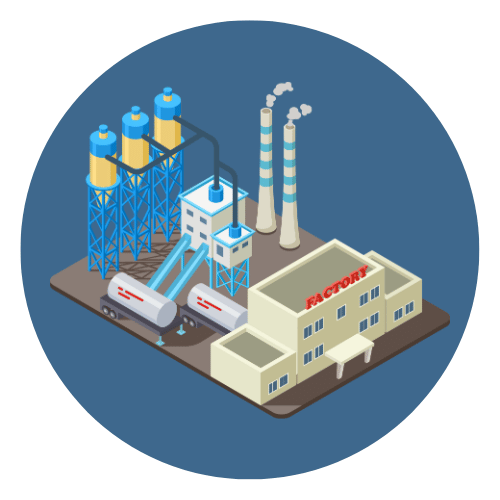Valve symbols play a crucial role in the fields of engineering and technical drawing, serving as essential elements in process flow diagrams (PFD) and piping and instrumentation diagrams (P&ID). These symbols provide a universal language that enables engineers, technicians, and operators to understand and communicate the design and operation of complex piping systems efficiently.
The accurate representation of valves is critical for ensuring the correct operation and maintenance of systems in industries such as oil and gas, petrochemicals, water treatment, and pharmaceuticals. Valve symbols help to identify the type of valve, its function, and how it interacts with other components in a system. This facilitates seamless collaboration across teams, reduces errors during the design phase, and enhances safety by providing clear, standardized documentation.
This article delves into the various types of valve symbols, explaining their significance and how they are applied in P&IDs. From gate valves and globe valves to ball and butterfly valves, understanding these symbols is fundamental to mastering process design and control. By exploring valve symbols in-depth, this guide aims to equip engineers and technicians with the knowledge needed to interpret and utilize these critical elements in their work accurately.
I. What Are Valve Symbols?

1. Definition and Purpose
Valve symbols are standardized graphical representations used in piping and instrumentation diagrams (P&ID) and process flow diagrams (PFD) to depict the types and functions of valves within a system. These symbols provide a visual shorthand that simplifies complex engineering schematics, ensuring that everyone—from design engineers to operators—can quickly interpret and understand the flow control elements in a process.
2. Why Valve Symbols Are Important
- Clarity and Consistency: Valve symbols help maintain uniformity across technical drawings, reducing misunderstandings and errors.
- System Visualization: By using symbols, engineers can map out entire piping networks, showing where valves are placed and how they interact with other components.
- Efficient Communication: They enable seamless communication between departments, contractors, and stakeholders involved in design, construction, and maintenance.
- Safety and Control: Clearly marked valve types (such as safety valves, control valves, or isolation valves) ensure proper system operation and enhance safety measures.
3. Basic Structure of Valve Symbols
Most valve symbols consist of:
- Valve Body – A geometric shape (circle, rectangle, or square).
- Flow Line – A solid line passing through the body, representing fluid flow.
- Actuation or Control – Additional elements (arrows, springs, or levers) indicating how the valve is operated (manual, electric, pneumatic, etc.).
4. Common Uses in Industry
- Oil & Gas – Controlling fluid flow in pipelines and refineries.
- Water Treatment – Managing the movement of water through treatment facilities.
- Manufacturing – Regulating the flow of gases and liquids in production lines.
- Pharmaceuticals – Ensuring precise control of process flows during drug manufacturing.
II. Basics of Valve Symbols

Valve symbols are essential components in engineering drawings, used to represent the various types of valves within a system. Their primary purpose is to simplify complex piping and instrumentation diagrams (P&IDs) by providing a standardized representation that conveys vital information about valve type, operation, and flow control.
Valve symbols are standardized according to various international and national guidelines, such as those set by the American National Standards Institute (ANSI), the International Organization for Standardization (ISO), and the Instrument Society of America (ISA). These standards ensure that engineers and technicians around the world can interpret and create diagrams consistently and accurately.
Consistency in valve representation is crucial for the integrity of process designs. Misinterpretation of valve symbols can lead to operational errors, safety hazards, and costly design revisions. By adhering to standard symbols, industries can maintain uniformity across engineering disciplines and project phases.
Key components of valve symbols include actuators, ports, and flow direction indicators. Actuators, represented by distinct shapes or markings, indicate how the valve is operated—manually, pneumatically, hydraulically, or electrically. Ports represent the entry and exit points for fluids, and arrows or lines indicate the direction of flow. These elements work together to provide a comprehensive overview of valve functionality within the system.
Understanding valve symbols is foundational to mastering process flow design, enhancing operational efficiency, and ensuring the safety and reliability of industrial systems.
III. Types of Valve Symbols

A. Gate Valves Gate valves are represented by symbols that typically include a vertical line intersected by a horizontal bar or wedge, illustrating the gate mechanism. These valves are widely used for on-off control of fluids and are known for their ability to provide minimal pressure drop when fully open.
- Symbol Representation: A straight vertical line with a wedge or rectangle.
- Applications and Common Uses: Used in pipelines requiring full flow or shut-off, such as water distribution systems.
- Advantages and Disadvantages:
- Advantages: Effective sealing, minimal flow restriction.
- Disadvantages: Slow operation, prone to wear over time.
B. Globe Valves Globe valve symbols typically feature a circle intersected by a horizontal line, representing the internal plug mechanism that regulates fluid flow.
- Symbol Representation: A circle bisected by a horizontal line.
- Applications and Common Uses: Suitable for throttling applications and systems requiring flow regulation.
- Advantages and Disadvantages:
- Advantages: Precise flow control, good shut-off capabilities.
- Disadvantages: Higher pressure drop, complex design.
C. Ball Valves Ball valves are depicted using symbols that include a circle with a perpendicular bar through the center, symbolizing the rotating ball.
- Symbol Representation: A circle with a straight line intersecting through it.
- Applications and Common Uses: Common in industries requiring quick shut-off.
- Advantages and Disadvantages:
- Advantages: Fast operation, durable design.
- Disadvantages: Limited throttling capacity.
D. Butterfly Valves Butterfly valve symbols show a circle with a diagonal line through the center, representing the rotating disk.
- Symbol Representation: A circle with a diagonal or X-line across.
- Applications and Common Uses: Used in large-scale applications where space is limited.
- Advantages and Disadvantages:
- Advantages: Lightweight, quick operation.
- Disadvantages: Limited to low-pressure systems.
E. Check Valves Check valve symbols depict arrows or lines indicating flow in one direction only, with a barrier or spring mechanism.
- Symbol Representation: A line with an arrow and a perpendicular bar.
- Applications and Common Uses: Prevents backflow in piping systems.
- Advantages and Disadvantages:
- Advantages: Simple design, prevents reverse flow.
- Disadvantages: Can cause pressure drop, limited to specific flow directions.
F. Control Valves Control valves are symbolized by additional actuators and position indicators, representing their role in automated systems.
- Symbol Representation: Standard valve symbol with added actuator or diaphragm.
- Applications and Common Uses: Used in systems requiring precise flow control.
- Actuation Methods: Pneumatic, Electric, Hydraulic.
G. Relief and Safety Valves Relief valve symbols typically feature an arrow pointing away from the valve, indicating pressure release.
- Symbol Representation: A line with an arrow and pressure indicator.
- Importance in Pressure Systems: Critical for safety, prevents overpressure.
- Applications and Common Uses: Used in boilers, pressure vessels, and pipelines.
IV. How to Read Valve Symbols

1. Understanding the Basics
Valve symbols are essential components in piping and instrumentation diagrams (P&ID). They visually represent the function and type of valve in a system, ensuring accurate design, maintenance, and troubleshooting of industrial processes.
Key Elements of Valve Symbols:
- Valve Body – Basic geometric shape representing the valve (circle, rectangle, or square).
- Flow Path – A line passing through the symbol, indicating the flow direction.
- Actuator/Control – Additional shapes (diagonal lines, arrows, or actuators) show how the valve is operated.
2. Common Valve Symbol Components
- Solid Line – Represents a pipeline.
- Arrowhead – Indicates the direction of flow.
- Actuator Lines – Dotted or dashed lines symbolize control mechanisms.
- Double Arrows – Suggests a modulating or adjustable valve.
- Spring Symbols – Used in pressure relief or check valves, indicating automatic return.
3. Interpreting Different Valve Types
Gate Valve (On/Off Control)
- Symbol: A straight line intersecting a rectangle or circle.
- Interpretation: This valve either allows full flow or completely stops it.
Globe Valve (Flow Regulation)
- Symbol: A circle with a horizontal line and an arrow crossing it.
- Interpretation: Designed to regulate flow by adjusting the position of the internal plug.
Ball Valve (Quick Shut-Off)
- Symbol: A circle with a smaller, filled-in circle inside.
- Interpretation: Rotating a ball inside controls flow. Simple and effective for quick shut-off.
Butterfly Valve (Flow Control in Large Pipes)
- Symbol: A diagonal line crossing a circle.
- Interpretation: A rotating disc manages flow, common in large pipelines.
Check Valve (Prevents Backflow)
- Symbol: A line with an arrow at one end, blocked by a perpendicular line.
- Interpretation: Automatically prevents reverse flow, essential for maintaining directional flow.
4. Actuator Symbols
Actuators define how the valve is operated. They can be manual, electric, pneumatic, or hydraulic.
- Manual (Handwheel) – A line with a circle at the top.
- Pneumatic Actuator – A diaphragm symbol or double lines.
- Electric Actuator – A box with an electric bolt symbol.
- Hydraulic Actuator – A cylinder shape intersecting the valve body.
5. Example Walkthrough
Let’s break down a typical valve symbol:
- Symbol: ⚫—◼ (A circle intersected by a solid line into a rectangle)
- Interpretation: This represents a gate valve with a manual actuator controlling the flow of liquid or gas in a pipe.
6. Recognizing Multi-Function Valves
Some valves have additional markings:
- Pressure Relief Valve – A spring above the valve symbol.
- Control Valve – A valve with a dashed actuator line connecting to a control loop.
7. Tips for Reading P&ID Diagrams
- Follow the Flow: Start at the source and trace the flow path, identifying valve types along the route.
- Check Actuation: Verify how each valve is operated to understand control points.
- Cross-Reference: Use the legend or key that accompanies the P&ID for non-standard symbols.
V. Valve Symbol Variations
1. Introduction to Symbol Variations
Valve symbols can differ based on industry standards, geographic regions, and specific company practices. While the core function remains the same, slight variations in design can indicate different operational details or specific standards followed by the organization.
Understanding these variations is crucial for reading piping and instrumentation diagrams (P&ID) accurately, especially in global industries like oil and gas, petrochemicals, and power generation.
2. Common Valve Symbol Standards
1. ANSI/ISA (American National Standards Institute/International Society of Automation)
- Widely Used In: North America.
- Characteristics:
- Clear, simple, and geometric designs.
- Focus on functionality rather than intricate details.
- Includes actuator type directly on the symbol.
2. ISO (International Organization for Standardization)
- Widely Used In: Europe and international projects.
- Characteristics:
- More detailed and descriptive symbols.
- Incorporates additional elements such as flanges, seats, and seals.
- Universal symbols that standardize designs across countries.
3. DIN (Deutsches Institut für Normung)
- Widely Used In: Germany and European Union.
- Characteristics:
- Emphasis on precision and technical details.
- Often includes metrics and additional measurements.
3. Key Valve Symbol Variations
| Valve Type |
ANSI/ISA |
ISO |
DIN |
| Gate Valve |
Circle intersected by a rectangle |
Rectangle with two diagonal lines |
Square with a vertical line |
| Globe Valve |
Circle with a horizontal line |
Circle with flow arrow inside |
Square with two intersecting lines |
| Ball Valve |
Circle with a smaller, filled circle inside |
Circle with a solid diagonal line |
Square with a small filled-in circle |
| Butterfly Valve |
Circle intersected by a diagonal line |
Circle with two curved lines |
Circle with a rotating blade symbol |
| Check Valve |
Arrow with a perpendicular line blocking it |
Arrow with a spring symbol |
Arrow with a triangle |
| Relief Valve |
Line intersected by a spring symbol |
Box with spring above |
Box with an arrow pointing out |
4. Specialized Valve Symbols
Some systems require specialized valves, leading to more complex symbols:
- Three-Way Valve – Shows three connection points, often indicated by T-junctions.
- Control Valve with Positioner – A globe or gate valve with an actuator and control loop indicated by dashed lines.
- Diaphragm Valve – Represented by a square with a curved diaphragm line inside.
- Plug Valve – A circle with a triangular plug or flow restriction symbol.
5. Custom Valve Symbols
Why Customization Occurs:
- Company Standards: Some companies develop their own symbols to meet proprietary needs.
- Unique Processes: Specialized systems may require valves that standard symbols cannot fully represent.
- Simplification: In complex P&IDs, companies may simplify symbols to reduce diagram clutter.
6. Interpreting Valve Symbol Variations
- Refer to Legend: Always check the P&ID legend, as it provides clarification on any non-standard symbols used.
- Consult Standards: Reference ANSI/ISA, ISO, or DIN documentation for official symbol interpretations.
- Ask for Clarification: In custom or older diagrams, consult engineers or designers for specific interpretations.
7. Example Comparison of Variations
To demonstrate variations, consider a pressure relief valve:
- ANSI/ISA – A valve symbol with a spring drawn above it.
- ISO – A valve with a triangle pointing outward and a spring above the line.
- DIN – A box with an arrow pointing out, intersected by a spring.
VI. Why Valve Symbols Matter
1. Ensuring Clear Communication
Valve symbols serve as a universal language in piping and instrumentation diagrams (P&ID), ensuring seamless communication across engineering teams, operators, and maintenance personnel. By using standardized symbols, professionals can interpret complex systems without ambiguity, reducing the risk of miscommunication.
Example:
In large-scale oil and gas projects, multiple teams handle different aspects of design and installation. Clear valve symbols ensure everyone understands the system’s functionality, regardless of location or background.
2. Promoting Safety and System Integrity
Correctly reading valve symbols prevents dangerous operational errors. Safety-critical valves, such as pressure relief or check valves, are essential for protecting pipelines, equipment, and personnel from overpressure, backflow, and hazardous leaks.
Key Safety Benefits:
- Preventing Overpressure – Relief valves divert excess pressure, preventing explosions.
- Avoiding Backflow – Check valves ensure fluid moves in one direction, protecting sensitive equipment.
- Isolating Hazardous Areas – Gate and butterfly valves isolate sections during maintenance or emergencies.
3. Enhancing Operational Efficiency
Valve symbols streamline troubleshooting and maintenance by providing a quick visual reference for valve types and their functions. This improves response times during shutdowns or system malfunctions, reducing downtime and operational costs.
Operational Advantages:
- Faster Repairs – Maintenance teams can quickly locate and understand valve functions in P&ID diagrams.
- Efficient Upgrades – Engineers can easily integrate new valves or modify existing systems using standardized symbols.
4. Supporting Standardization Across Industries
Standard valve symbols align with international standards like ANSI/ISA, ISO, and DIN, promoting consistency across industries such as petrochemicals, pharmaceuticals, and manufacturing. This standardization simplifies project handovers, cross-border collaborations, and multi-vendor equipment integration.
Industries Benefiting from Standardization:
- Oil & Gas
- Power Generation
- Water Treatment
- Semiconductor Manufacturing
5. Reducing Errors in Design and Implementation
Valve misinterpretations can lead to costly design errors, production delays, and system failures. By adhering to universally recognized symbols, engineers ensure that the system operates as intended, minimizing costly mistakes during design, fabrication, and commissioning.
Case Study Example:
In a petrochemical plant, misinterpreting a control valve for a manual valve resulted in process disruptions and significant financial losses. Standardized valve symbols could have prevented this error.
6. Facilitating Training and Knowledge Transfer
Valve symbols simplify the training process for new engineers and operators by offering a visual learning aid. Standardized diagrams enhance learning, ensuring quick adaptation to complex systems.
Training Benefits:
- Reduced Learning Curve – New employees can quickly understand valve functions.
- Consistent Knowledge Transfer – Knowledge remains intact during staff transitions.
7. Enabling Automation and Smart Systems
As industries adopt automation, valve symbols play a key role in digital twin technologies and system simulations. Automated control systems rely on accurate P&ID diagrams to execute processes, making precise valve symbol interpretation vital for system accuracy.
Conclusion
Valve symbols play a vital role in the design, operation, and maintenance of industrial systems. They provide a universal language that ensures clear communication, enhances safety, and streamlines operations across industries like oil and gas, petrochemicals, and manufacturing.
By accurately reading and interpreting valve symbols, engineers and operators can prevent costly errors, protect equipment, and maintain efficient process control. As industries evolve and embrace automation, the importance of standardized valve symbols will only grow, supporting the development of smarter, safer, and more efficient systems.
Understanding valve symbols is not just a technical requirement—it’s a fundamental aspect of ensuring operational success and safety in complex industrial environments.



 Automation System
Automation System  Energy Engineeing
Energy Engineeing  Instrumentation System
Instrumentation System  Mechanical Engineeing
Mechanical Engineeing  Piping Technologies
Piping Technologies  Transportations
Transportations  Manufacturing
Manufacturing  Training Material
Training Material 












